
EnriqueB
-
Posts
398 -
Joined
-
Last visited
Content Type
Profiles
Forums
Store
Help Articles
Posts posted by EnriqueB
-
-
-
On 12/30/2023 at 6:51 PM, Duvel said:
Really? I do eat rare red meat here in Spain all the time. But, of course, there’s a lot of variation between restaurants.
-
-
On 12/17/2023 at 12:18 AM, sverreef said:
I love the artistic flair of your plating, @EnriqueB. Lots of inspiration there, and your flavour combinations sounds intriguing too 🙂
Thanks! Those two in your post look great too, I want to try them!
-
-
A modern take on Christmas flavours with the Creami: "Turrón de Jijona" gelato, chestnuts cream, dark chocolate ganache, streusel and cocoa cookie.
"Turrón" is a typical Christmas sweet in Spain, and this "Jijona" variety is made from 70% almonds and honey. Chestnuts are also in season so I thought they fit well. Dark chocolate gives a nice touch that complements flavours and the brown color palette.
For the ice cream I used this recipe, slightly modified to increase the PAC, as I needed easier piping into the mold, and serve at a lower temp (from the freezer and just a little wait of the dish).
-
 9
9
-
 1
1
-
 1
1
-
-
I’m from Madrid, and both places were excellent choices! Nice you liked them.
-
 3
3
-
-
3 hours ago, Duvel said:
Nice … I am going to steal this idea 🙏
That’s what it’s for!! 😁 -
I found red Swiss chard at the market, which I find so much more beautiful than the usual chard found here. Struggled to find a nice way to plate it nicely. Ended up sous-viding the stalks so they keep color, blanching just a few seconds some full leafs and then move to ice water to keep color too, and use them in the plate bottom, and steaming the remaining leafs to form a kind of flower. Sided with dry raisins rehydrated in sweet Pedro Ximénez wine, and a iberian ham velouté sauce:
Using the same ham stock as the one for the velouté, I pressure-cooked chickpeas with milk-cup mushrooms and rice&blood sausage ("morcilla de Burgos"). Accompanied by fried vasque green peppers ("piparras"):
Dessert was a coconut gelato I posted on the Ninja Creami thread.
-
 16
16
-
 2
2
-
-
Yesterday's dessert was a coconut gelato with streusel and redcurrants. I used a technique I had seen on a website (but couln't locate again) of cold steeping roasted dry coconut in the recipe liquids, and it worked amazingly well.
Recipe, makes 1 kg-
100 g dried shredded coconut
-
584 g whole milk
-
50 g whipping cream (35% fat)
-
130 g coconut cream (24 % fat)
-
40 g skimmed milk powder
-
150 g sugar
-
40 g atomized glucose 21DE
-
4 g neutro Cremodan SE30
-
2 g salt
Roast the shredded coconut in the oven at 180ºC until it starts to take colour. Cold infuse the roasted coconut in the milk, whipping cream, plus around 100 g milk (which will be absorbed by the coconut) in the fridge for 24 hours. Strain, pressing well to extract all liquid. Weight and ensure you have the 584+50=634 g from the recipe, otherwise remove or add milk. This cold infuse technique gets an amazing coconut flavor.Heat the infused liquid plus the coconut cream, at around 40ºC add the skimmed milk, and around 50ºC all the other premixed dry powders. Heat to 85ºC, and blend at hight speed for 1 minute. Chill to 4ºC in less than 2 hours and refrigerate/mature for at least 4 hours, until 24 hours. Freeze for 24 hours if using the Ninja Creami, or churn. For the NC, process on Ice Cream mode (just one cycle, assuming a freezer at -20ºC. No respin needed).
Serving temp: -10ºC
POD: 16.8%
TS: 32.2%
Fat: 7%NOTE: I formulated this recipe because I had exactly 130 g coconut cream left from preparing a Thai curry dish. That's one advange of formulating your own ice creams using a program like IceCreamCalc, that you can adapt to what you have in your pantry.-
 4
4
-
 1
1
-
 1
1
-
-
11 hours ago, OlyveOyl said:
If this chart of rotation speeds has been made available previously, apologies. I found it to be useful information in being able to chose what speed is most likely to produce your desired outcome.
I found the rotation & times chart time ago and it is really useful. It shows that ice cream & gelato modes are actually equal, and that the other table from the Creami manual is just marketing nonsense.
In my experience the critical variable here is PAC / Serving temperature vs final base temperature, and most other variables are quite secondary. Each Creami function increases the temperature of your mix depending on how long & fast it works. The longer & faster, the more the temp increases. Ice Cream & Gelato functions increase on average around +8ºC, Sorbet around +9-10ºC, and Light Ice Cream around 10-11ºC. If you formulate your mix to have a serving temperature around these values, taking into account the initial temp of your mix which depends on your freezer temperature, you get perfect smooth results with just one cycle of the target function.
On the contrary, if your serving temperature is quite below the final temp after processing, you get the usual crumbly result, and need and extra cycle or respin. If your serving temp is quite above the final temp, you get soft ice cream.
This logic has worked for me (for conventional ice cream recipes) irrespective of whether I'm using american-style ice cream, custard-based or not, gelatos, or sorbets.
-
 4
4
-
 3
3
-
-
5 minutes ago, ElsieD said:
@EnriqueB beautiful!
Thank you!!
-
-
 6
6
-
 3
3
-
-
-
Just came here to say thank you to everyone here who helped me learn ice cream making. I bough a Ninja Creami like a year ago and learnt to use it and properly formulate ice creams reading this (and the icecreamery) thread. I also discovered other sources here, like Dana Cree's, Corvitto's or Goff's books, or the marvellous @paulraphael's Underbelly blog, all of which I've been studying for the past months.
So I'm sharing here some of my best ice creams-based desserts of these months:
Lime, lemongrass and kaffir lime leaves gelato. With hazelnut chilled soup, white chocolate crumble, and lime zest.
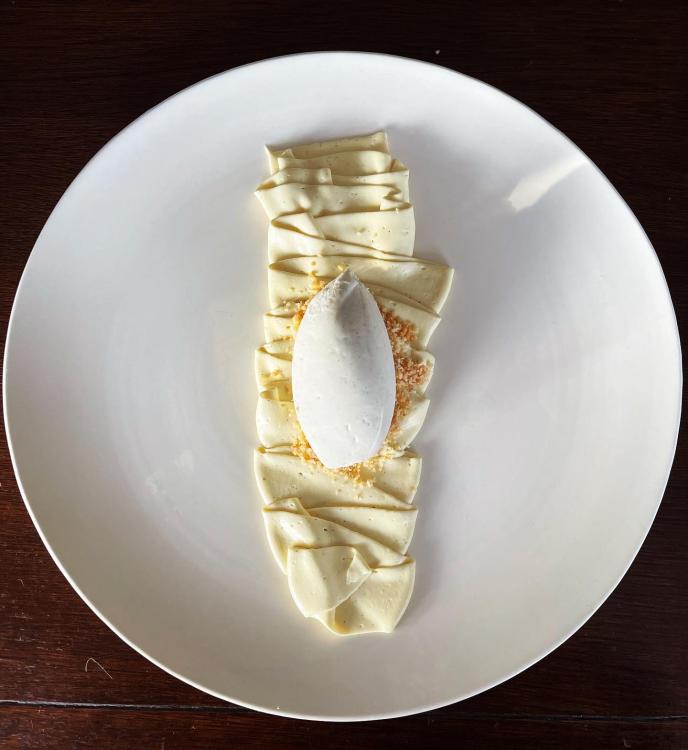
Vanilla fiordilatte gelato, streusel and passionfruit cremeux.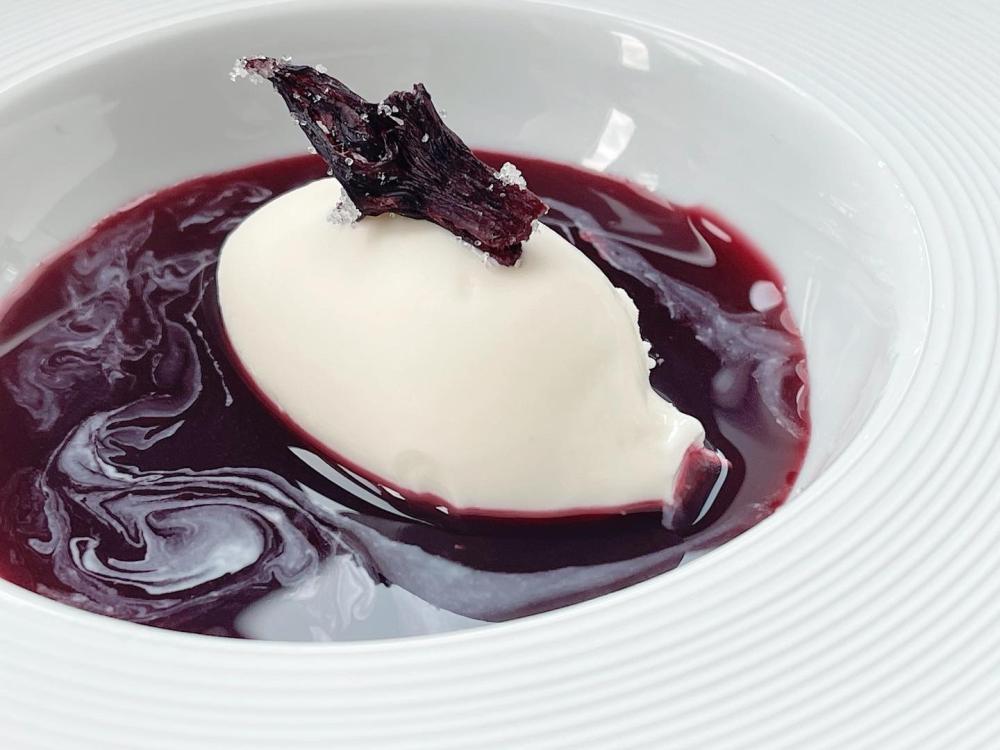
Greek yoghourt ice cream, hibiscus chilled soup and cristalized hibiscus flower.-
 4
4
-
 3
3
-
-
22 hours ago, DianaB said:
Quite by chance I came across an app aimed at people with a Pacojet. It is free to download so download I did and there are a number of recipes. Screenshots of 2 are attached. Might these work with the NC? Quantities would of course need adapting. Has anyone here tried similar? I’m wondering if the NC blades would cope given the warnings in the recipe book provided.
I would not try the first recipe. According to instructions you should not use the Creami with non-frozen food. Plus, it's a recipe for one of the extra blades that PacoJet includes (4-blade cutter), which don't have an equivalent in the NC.
The second recipe is probably fine, as it seems enough "ice-cream-like" to me.
-
 2
2
-
-
7 hours ago, Louise nadine brill said:
Well...it’s only 6 years later, but I just purchased a used unit for an incredible price. I pick it up tomorrow, and I am really excited! Unfortunately there isn’t a lot of information on how to use/ recipes. So far, it looks like The Ocoo has been adopted by a small group of elite Chefs in Spain - and while I do want to make Black Cauliflower, I am less interested in making a piece of celery look like a vanilla pod (both actual dishes). My hopes are to use it for flavour extraction from fruits for bonbon centers and/or jelly making, as well as performing all the usual tasks expected of a PC.The unit I purchased only has Korean Language on it - I think I can google translate to find out what the general buttons say but I cannot find anything online that is close to being an English user manual/recipe booklet. I came to egullet hoping to find some members who have experience/tips/recipes that they might share?
We have had some discussions about the unit here in Spain in a cooking chat group. Some members have seen the presentations by those "elite chefs" and even talked to them, and some bought the unit.
My contention has always been -and the owners of the unit could not prove me wrong- that this is just an electric pressure cooker. It just has programs to cook with or without pressure, but those programs (like the ones promoted by the chefs for the black caulifrower and the like) do not advertise their actual pressure/temperature combinations anywhere. There are no physics I can think of that make this any different from an electric pressure cooker where you put your food in a container inside the cooker and steam-pressure cook or at a given temperature without pressure if below 100ºC. In fact some people has been able to replicate the dishes promoted by the chefs just cooking in a glass jar inside a standard pressure cooker (see http://afuegolento.com.ar/2018/04/12/la-coliflor-negra-clon/, in Spanish).
-
 4
4
-
 1
1
-
-
18 hours ago, MelissaH said:
Am I thinking overly cautiously? Would his technique pass muster for a government food safety inspector?
No, you're absolutely right in your statements. I would not dare to follow such a recipe.
-
7 minutes ago, nickrey said:
Unfortunately Enrique, most people don't want to spend time learning theory. They want to cook.
Having helped Douglas with proof reading his book and being acknowledged for doing so, I understand the need for theory better than most.
Sadly, your ideal book is unlikely to interest many cooks, particularly those who just want to follow recipes to the letter.
I totally agree with you.
Some thoughts:
1) A book which is just about sous-vide recipes would be ok for me without much theory, but the thread seemed to be about good SV books to learn.
2) Many of the books suggested are not announced (or inferred by their names) as just recipe cookbooks, but as general books about SV, some of them even saying "Complete", "Techniques", etc. In those cases, ignoring the critical things I've mentioned above is an important flaw to me.
3) SV itself lends more to theory than to recipes when compared with most other cooking techniques (I'd put charcuterie and fermenting at the same level). Any serious author explaining the technique should take that into account. And in some points (times, temperatures, and safety) it differs so much from conventional techniques than I'd consider authors who ignore those issues (and don't just announce their books are recipe cookbooks) very unprofessional.
4) Whereas I understand that for entry-level books authors may fear that dealing with those types of issues may frighten cooks new to the technique, it is my contention that all of this can be explained even at beginner level without overwhelming. In fact I teach Sous Vide courses to all type of cooks, from professionals to home cooks and it has always been my challenge to explain those details to everyone. It can be done. I'm not pretending that all books be at the level of Baldwin or MC, but things can be explained in simple terms and summarized for everyone. As I said, the last book by Joan Roca does the job pretty well and is selling a lot in Spain.
-
 3
3
-
-
17 hours ago, rotuts said:
have you seen :
https://www.amazon.com/Sous-Vide-Home-Technique-Perfectly/dp/0399578064
it does a decent job , of the newer ' Picture ' Rx books addressing your concerns
I have not seen
yet.
what the first book does well is getting a novice interested in SV in the first place. Very interested.
Thanks for the suggestions, rotuts. The second one looks terrible, just by looking at the pages available in amazon. It does not seem to include much theory/technique according to the table of contents, and the recipes are set for specific sizes (a 4-cm steak) without any explanation about how to adjust if your steak just happens to be 3 or 5 cm wide. Any serious book on SV must include a table on each recipe that includes core target temperature, water temperature (if different from target, i.e. when applicable), time (which, if it depends on width, should be explained or options given), safety level/indications, and conservation details. Also, it is a good approach to offer a variety of profiles for some recipes (such as a "long time / low temp" or "shorter time / higher temp" for tough meats). That's what I would expect from a book that includes the words "Complete" and "Techniques" on its name. Even introductory books can include this type of information without being overwhelming, for example the new book from Joan Roca for home low temperature cooking (only available in Spanish, as far as I know) does include this type of things (it is weak in other aspects, but still much better than most introductory-level books I've seen).
-
 1
1
-
-
14 hours ago, JAZ said:
This book
-- The Essential Sous Vide Cookbook -- starts with a couple of chapters of background and theory. It also contains comparison charts on various sous vide devices, and contains charts at the back with cooking times for various foods. You can read some of the introductory chapters on Amazon. (Disclaimer: I copy edited this book but didn't try any of the recipes. My task was editing for grammar and style.)
I've read those chapters and this would be another example of what I said above. No mention whatsoever of how time (for tender cuts) depends on size and how it can be calculated. No safety details neither. Those two issues are "forgotten" by most books, whereas both topics can perfectly be covered at an introductory level, and they should be.
-
 2
2
-
-
On 10/02/2017 at 6:02 PM, FrogPrincesse said:
Did anybody notice Tom Colicchio criticizing the use of sous-vide as a technique to cook pork tenderloin on Top Chef recently (with Sean Brock approving)? He claimed it gave the appearance of medium rare but drew the juices out. I am not a big fan of pork tenderloin personally, but I was surprised as this technique seems very popular here on eGullet for this cut of meat!
That's total nonsense. Science and experience say exactly the opposite, if the profile is selected correctly.
-
 2
2
-
-
14 hours ago, Dave W said:
Some beef in this location in my fridge registered 2/2.5C in core/surface so max 36.5F.
I think Baldwin wrote that under 3C, outgrowth of C botulinum spores was over a month but he has wisely monetized that information and it's not readily available online.
There are 3 conditions for a safe storage time like that (and normally I've seen 21 days, not over a month): 1) Full pasteurization (equivalent to 6,5D reduction in Salmonella) - and see my concern about pasteurization for your profile in my previous message; 2) Rapid cooling, to <3ºC in less than 2 hours - don't know whether you do this; and 3) guaranteed storage at <3ºC - though you say you fulfill this, a home refrigerator may have its door open frequently and it is typical that it gets temperatures higher than 3ºC even it its coldest areas.
-
22 hours ago, Dave W said:
This weekend, various seasoning chicken thighs 65cx4 hours, and beef chuck steaks seam trimmed out of chuck roasts, 54.8cx30hours. They will all wait paitiently in the back of the fridge for me to eat them in the next three weeks.
A pound of the chicken has made it into some buffalo chicken salad with franks hot sauce, mayo, celery, garlic powder and blue cheese crumbles
About the chuck roasts, that profile is, to me, quite risky. Let me quote/repeat what I said to the ChefSteps team (they never bothered to answer) for a profile at 54ºC (this has also been discussed here in the past):
I am concerned about the suggestion to go as low as 54ºC for such a long time. The rule that Douglas Baldwin established himself, and now he works with ChefSteps, was that the safety minimum threshold for long cooking times was 54.4ºC. Furthermore, when we push the limits like this a small error in our equipment calibration can be critical, so this is, to me, just pushing the boundaries of safety. See for example the several comments saying that they had bad odors after that profile. I understand that you are using several hurdles here (nitrites and likely pre-searing, but these are not mentioned explicitly in the entry as critical requirements).I understand the logic of the 54ºC, I guess. Whereas the 54.4ºC threshold was established as the lowest value where C. perfringens had been shown to die, it should not grow from 52ºC upwards. But still I think this is pushing the limits. Specially taking into account the review by the ComBase team. They are serious microbiologist that developed one of the most well-known models of bacteria growth and destruction, and whereas they themselves start modelling death of C. perfringens from 54.5ºC, they indicate too that this was not intended for very long cooking times, and tell us that, in their opinion and review of the experimental data backing that, there is not enough evidence of the bacteria population kinetics in the area of the growth/no-growth (to which 54ºC would belong) for long cooking times.-
 2
2
-

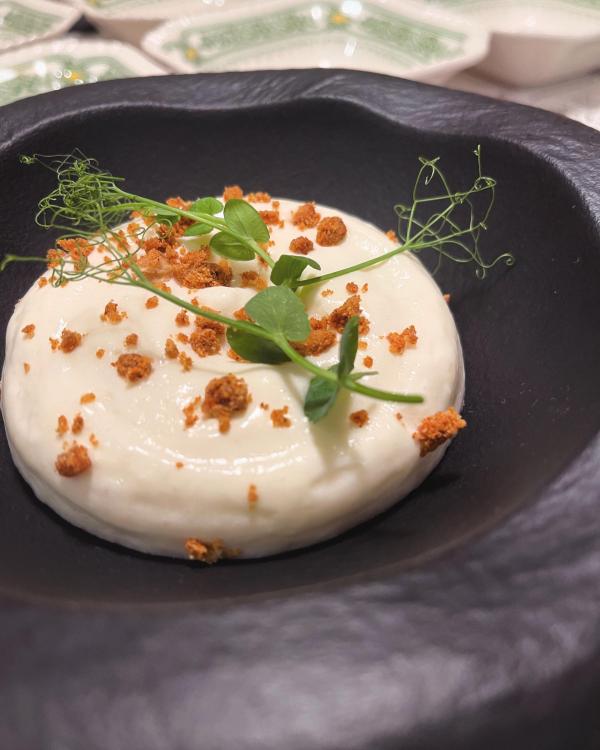
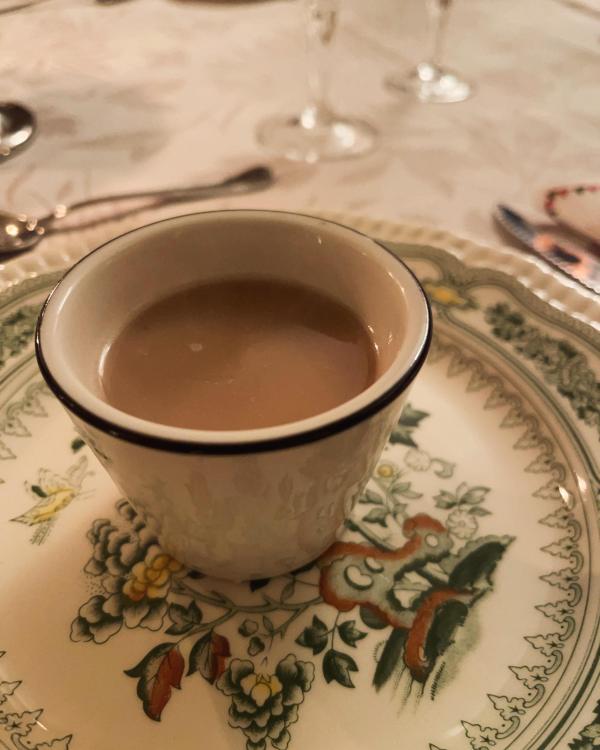
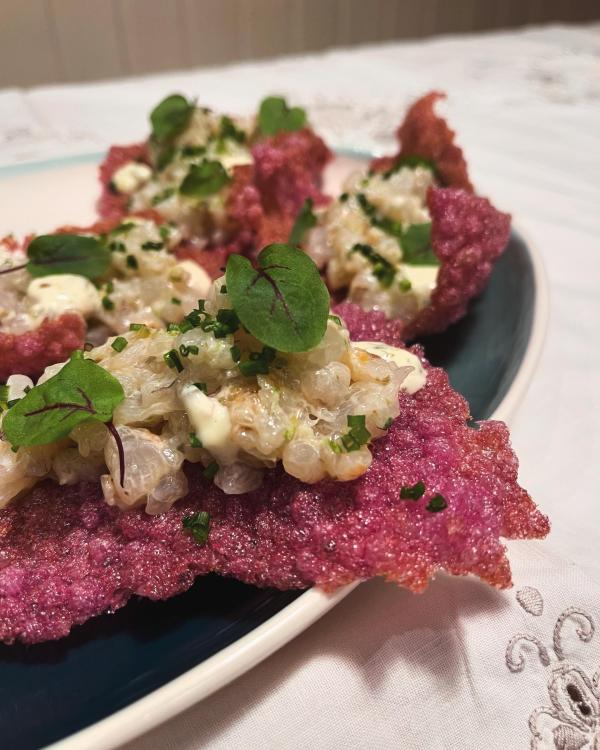
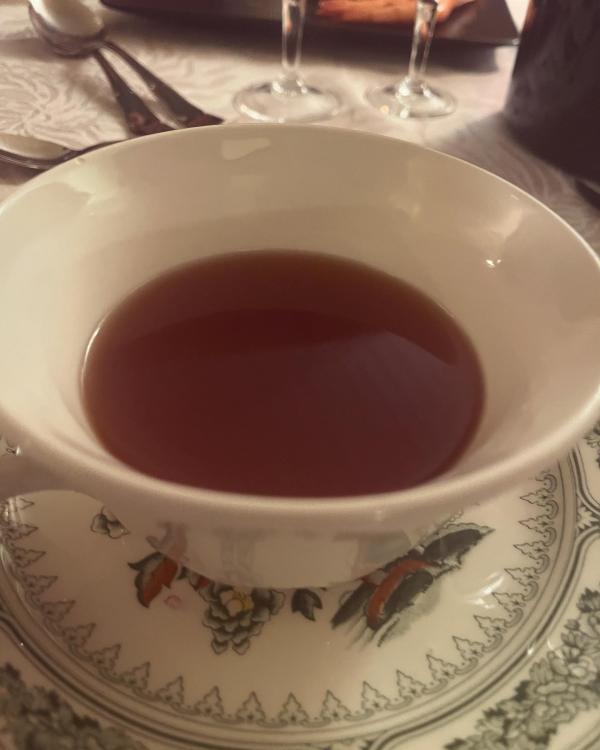
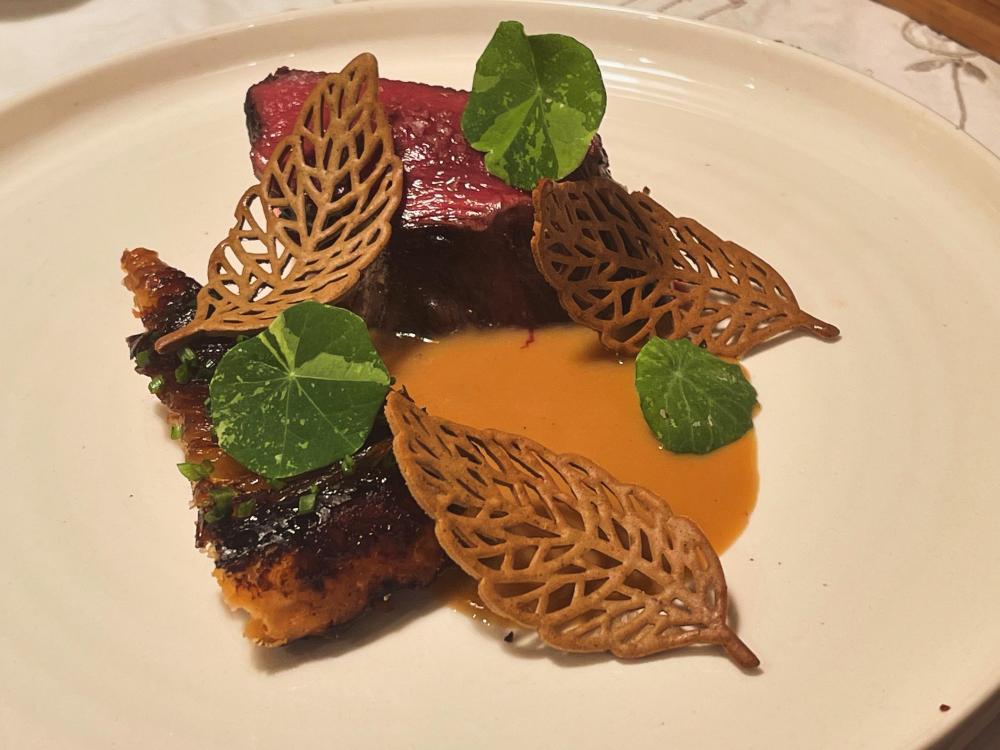
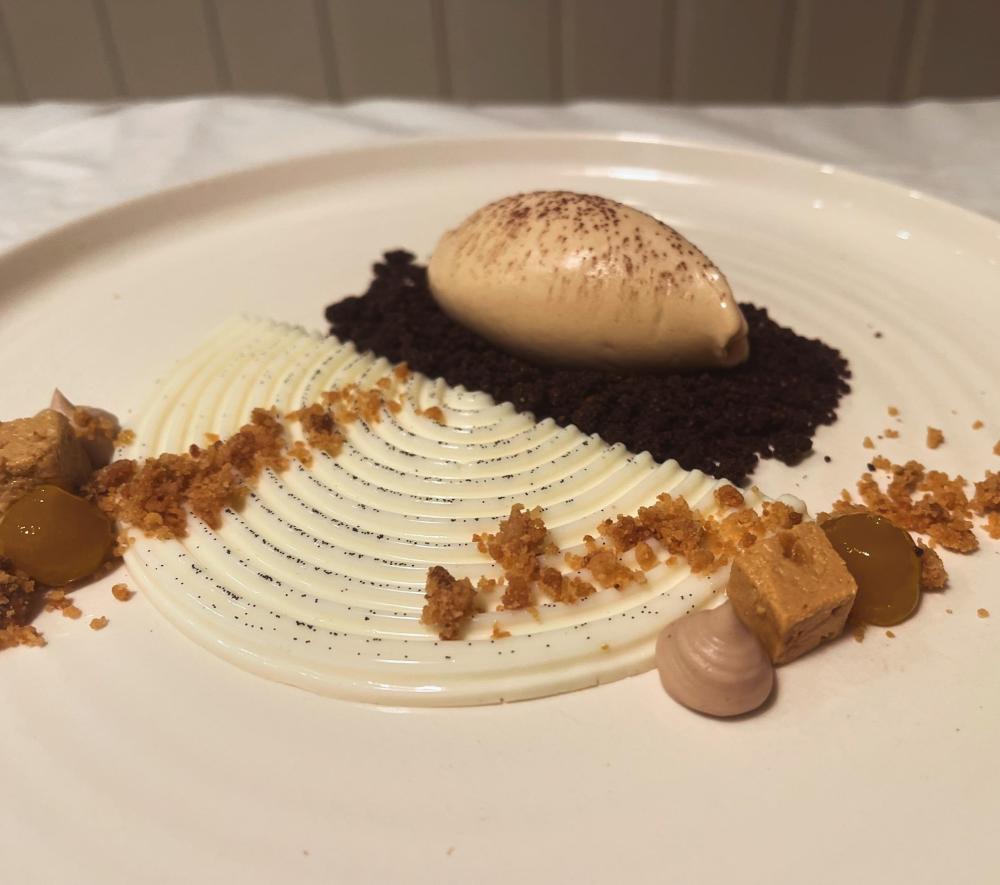

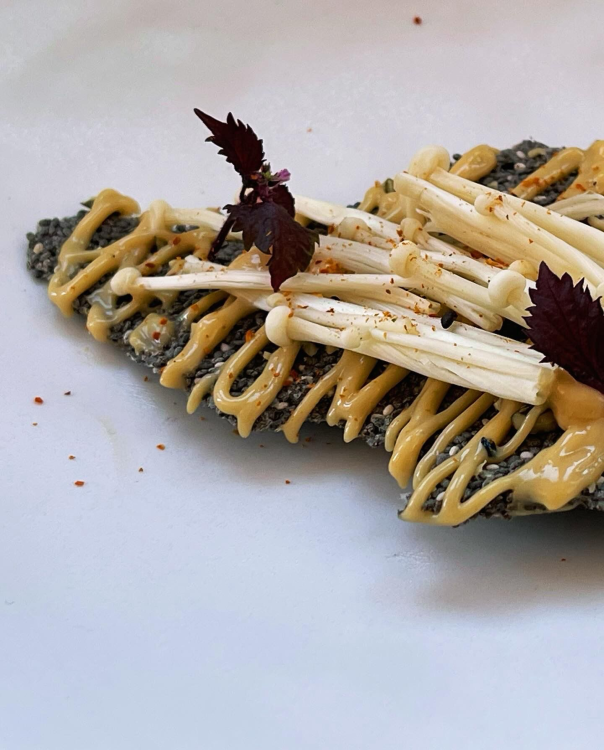
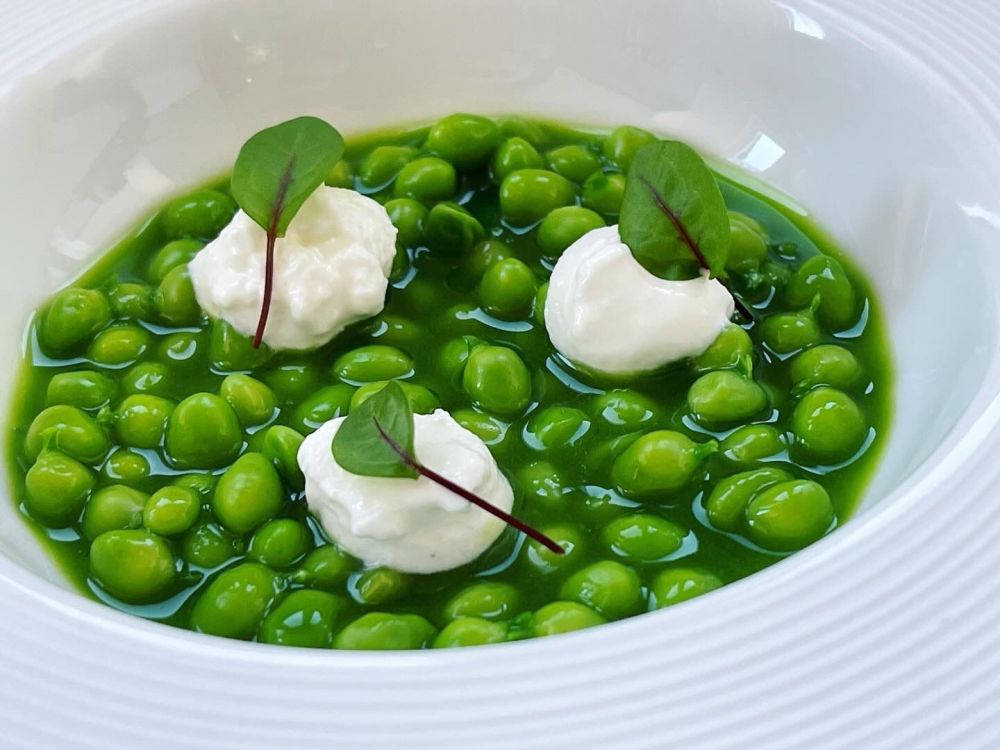


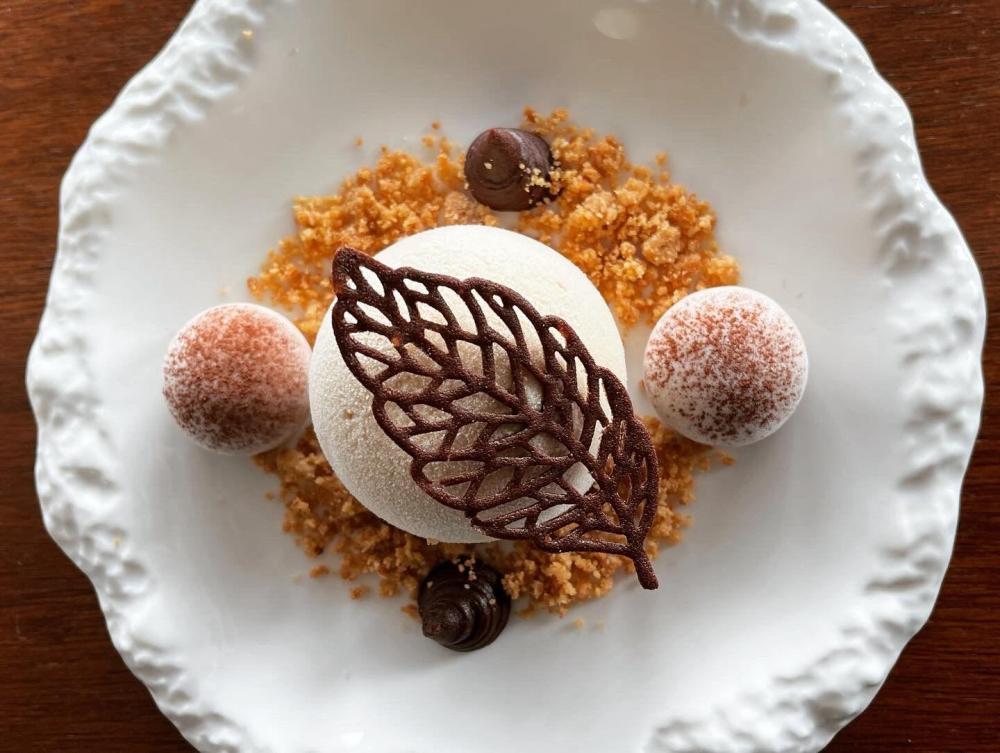
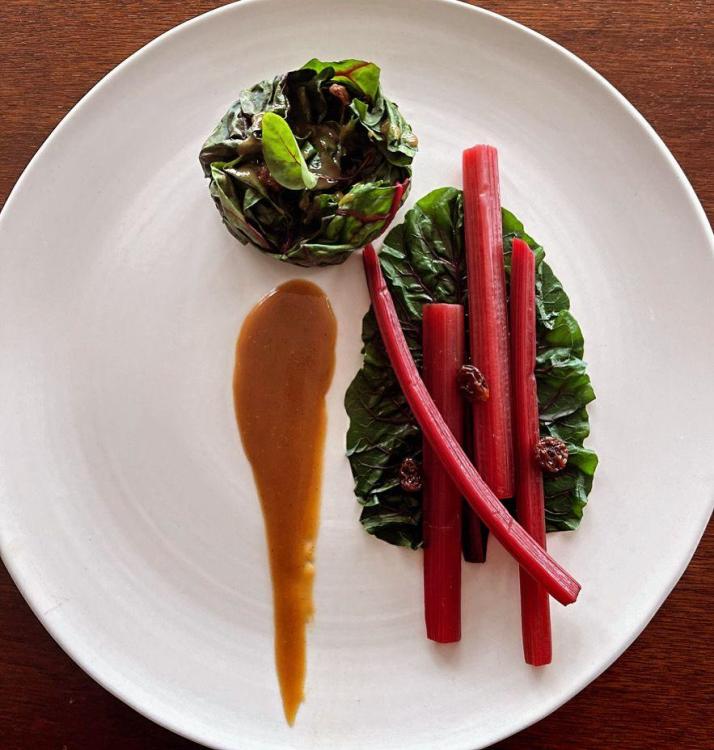
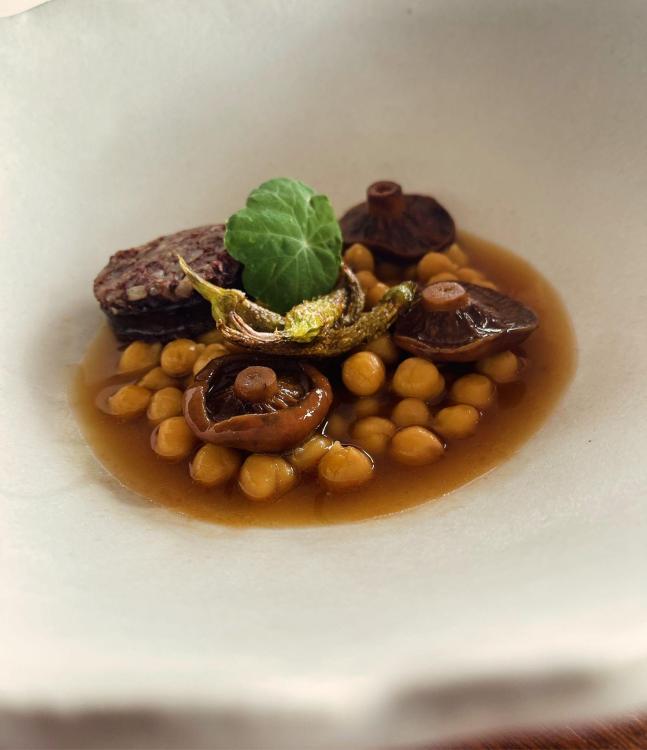
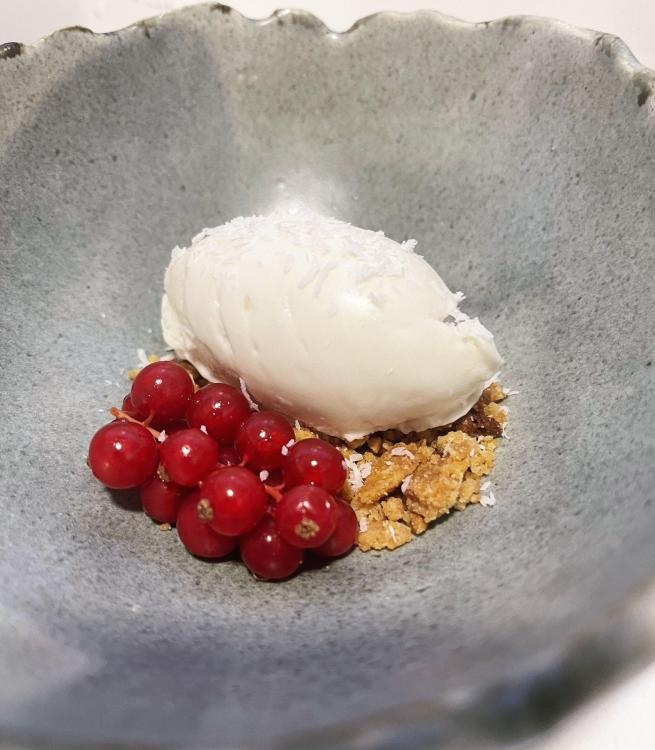
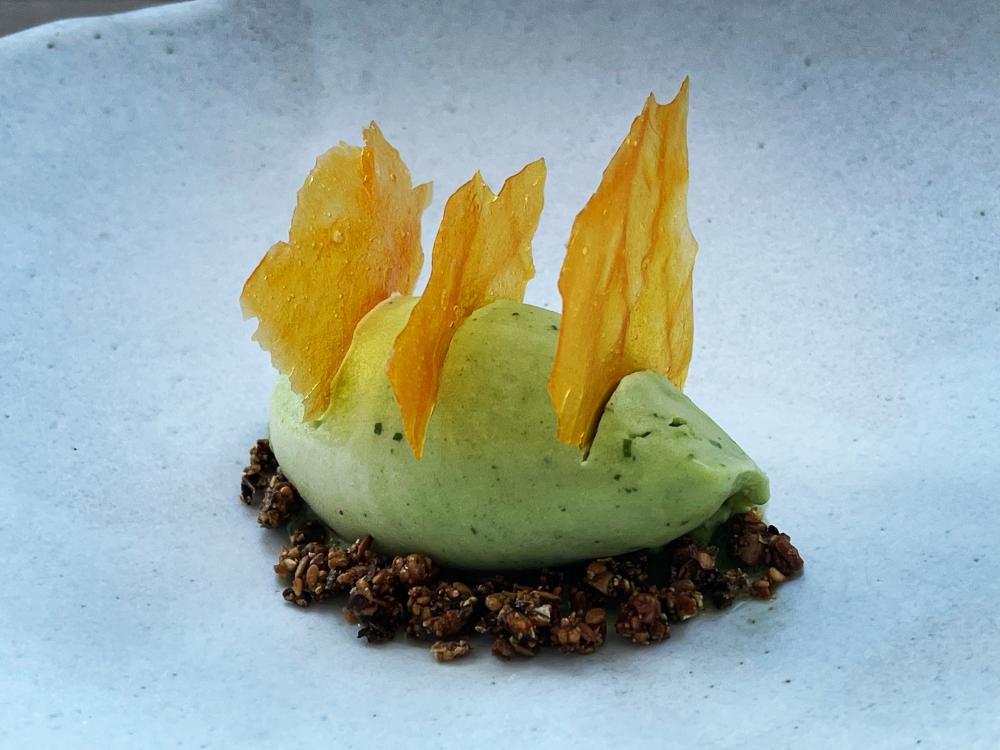
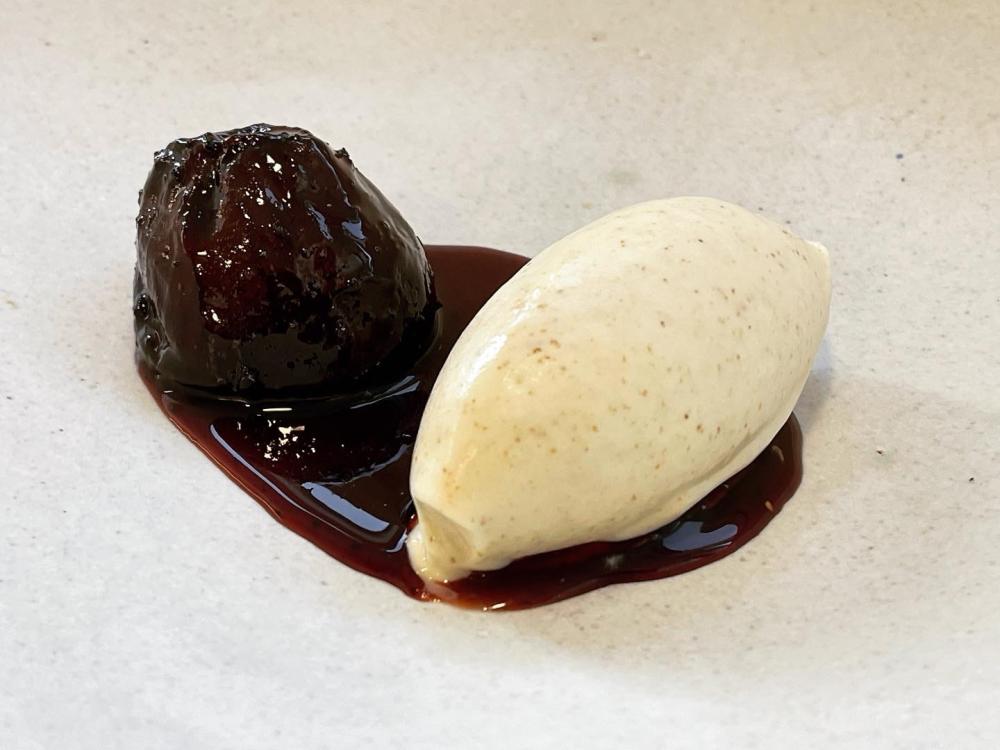
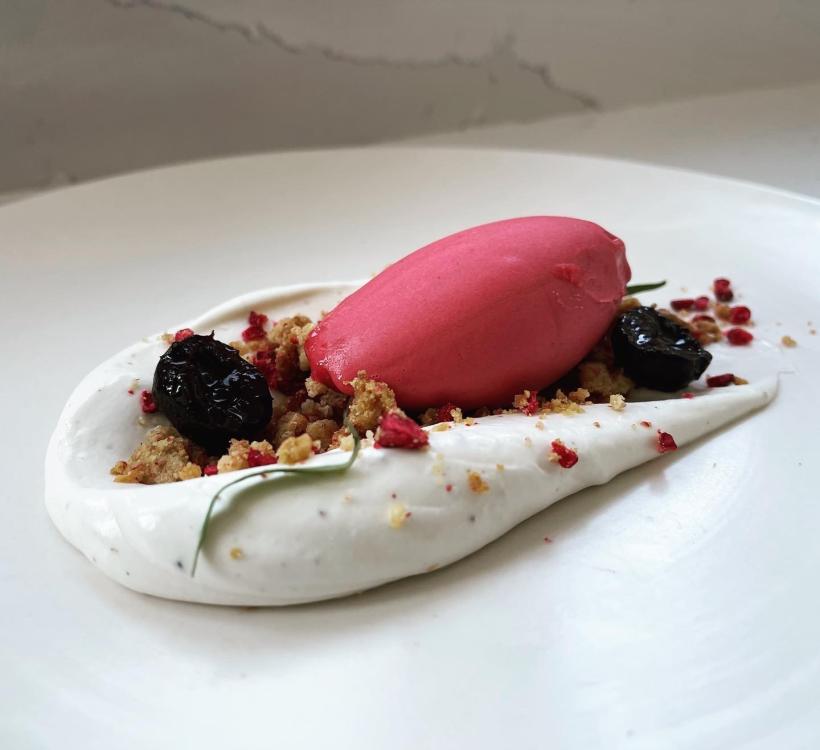
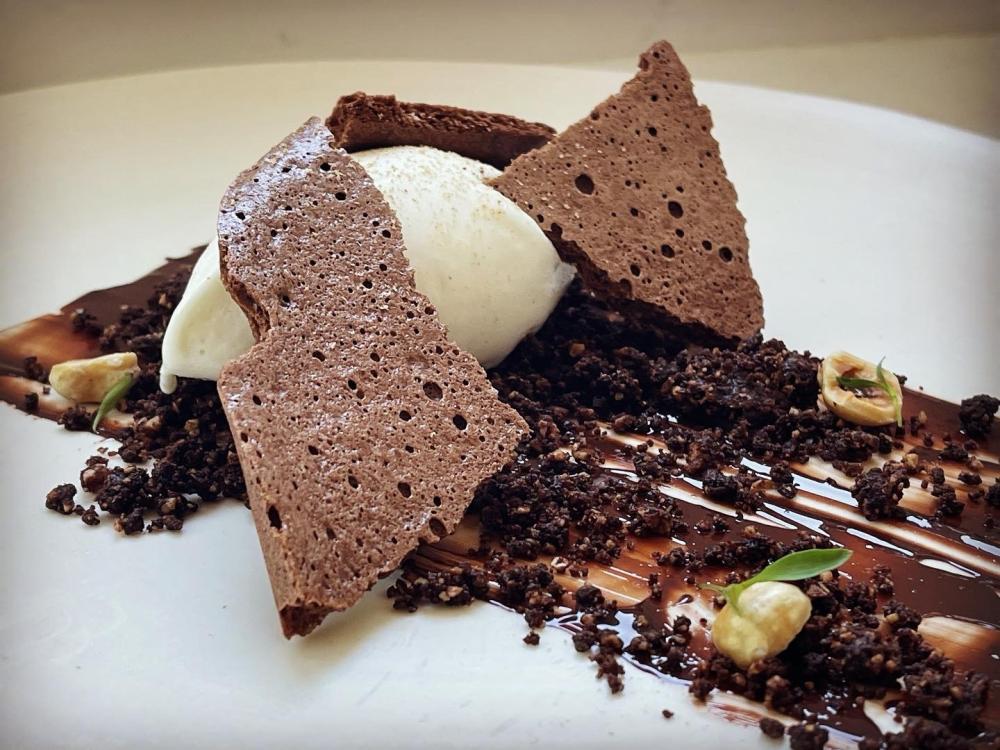
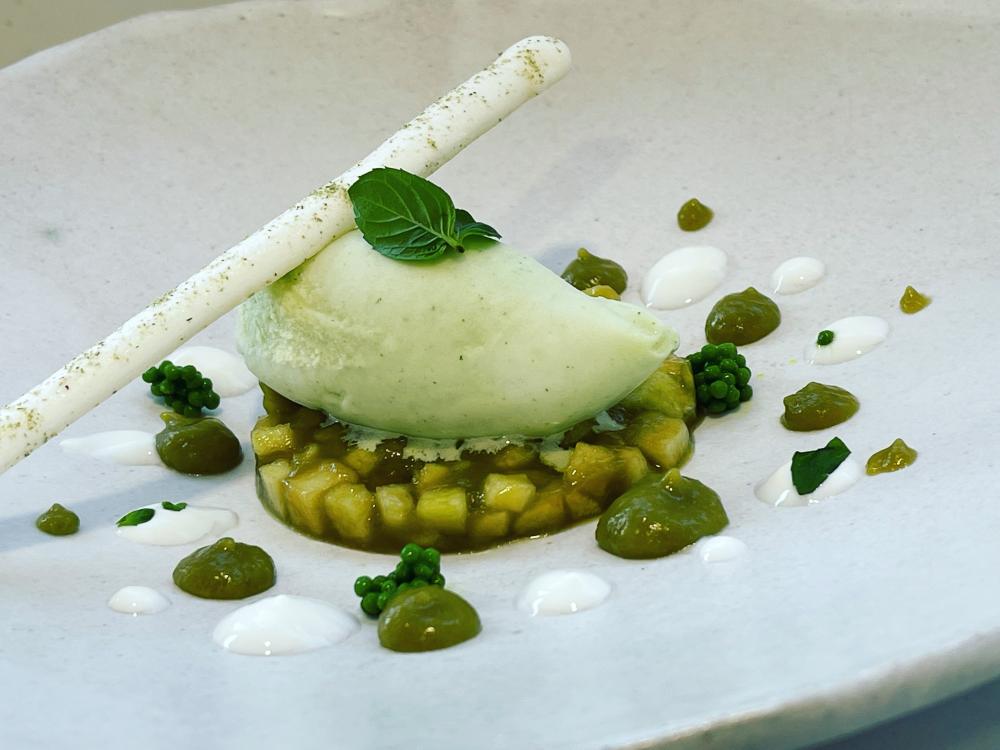
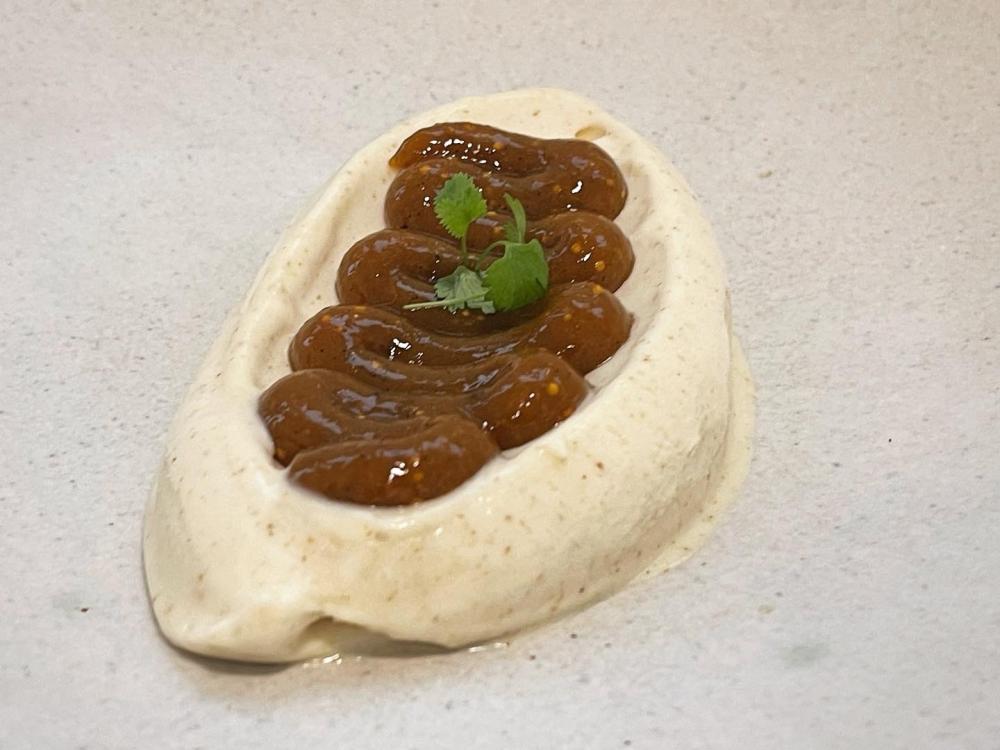
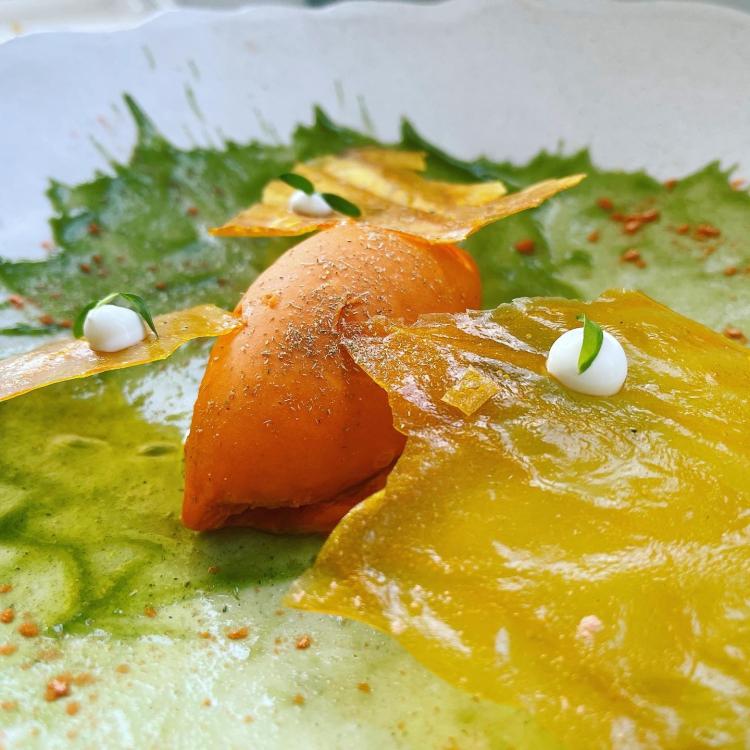

Dinner 2023
in Cooking
Posted
Ooops, seems like only pictures were uploaded on my last post, text was lost…
New Year’s eve dinner, double celebration as it was also my birthday:
- Chestnuts soup with armagnac and madeira.
- Tapioca and red cabbage cracker with prawns tartar and tartare sauce.
- Gorgonzola cheese foam with brown butter & panko crumble and pea sprout.
- Foie mi-cuit, chestnuts cream and mango fluid gel.
- Consommé
- Deer tenderloin, onion tarte tatin, chanterelles sauce and ceps tuile.
- Almond nougat gelato, vanilla & white chocolate panna cotta, double crumble and chestnuts cream.